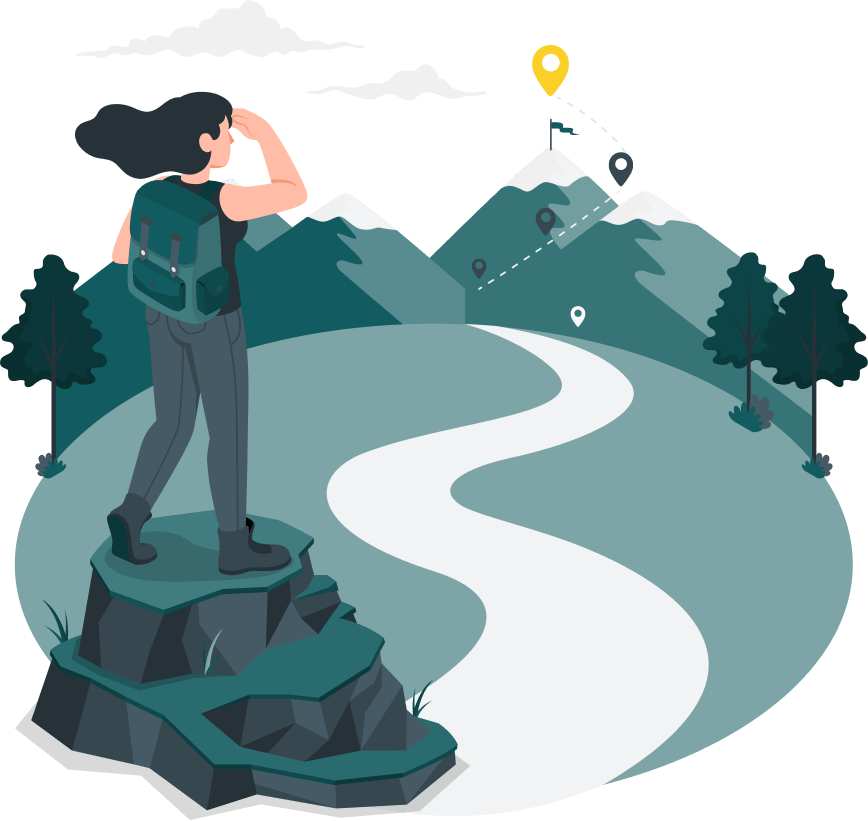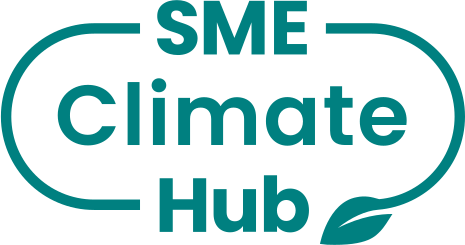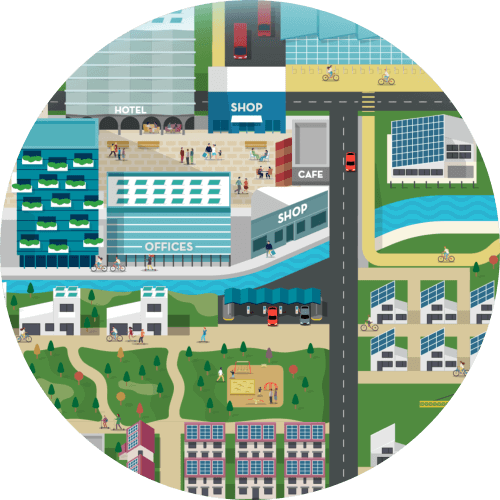See the steps your company can take towards a more sustainable future through our open resources.
Grupo Empresarial Bob SRL's Climate Report
Introduction *
Commitment And Targets *
Own emissions *
Value chain emissions *
(optional)Actions and plans to reduce emissions *
Climate Solutions *
(optional)Management and strategy *
(optional)Results, challenges and outlook *
Introduction *
reporting year
*2022
number of employees in the reporting year
*6
Commitment And Targets *
net zero target year
*2030
Base year
*2022
comment on your net zero targets
*Commitment made in 2022, using data from 2022 as a baseline.
near-term scope 1 target
*-
target year
*2025
near-term scope 2 target
*50
target year
*2025
Own emissions *
scope 1 emissions
scope 1 emissions (metric tons co2e)
*4.49
own facilities
*N/A
own vehicles
*N/A
own processes
*N/A
scope 2 emissions
scope 2 emissions (metric tons co2e)
*0.919
total energy consumption (kwh)
*994
renewable energy
*-
purchased electricity
*0.919
metric tons CO2eRenewable electricity (%)
-
purchased steam
*N/A
Renewable electricity (%)
-
purchased heating
*N/A
Renewable electricity (%)
-
purchased cooling
*N/A
Renewable electricity (%)
-
Value chain emissions (optional) *
scope 3 emissions
scope 3 emissions (metric tons co2e)
*1.61
supply chain related - upstream emissions
purchased goods and services
*0.576
metric tons CO2ecapital goods
*N/A
fuel and energy related activities
*N/A
transportation and distribution (upstream)
*0.585
metric tons CO2ewaste in operations
*N/A
business travel
*N/A
employee commuting
*N/A
leased assets (upstream)
*N/A
customer related - downstream emissions
transportation and distribution (downstream)
*N/A
processing of sold products
*N/A
use of sold products
*N/A
end-of-life treatment of products
*N/A
leased assets (downstream)
*N/A
franchises
*N/A
investments
*N/A
describe the calculation methodology and comment on accuracy:
*Normative.io, gave us guidelines on what we need to be gathering data for next year's reporting.
Actions and plans to reduce emissions *
Scope 1 Actions
own facilities
Yes
We are changing to a new office in 2024 and our decision will consider the energy efficiency in the building and the opportunity to use renewable energy.
own vehicles
No
We expect to increase the consumption of fuel in the following term.
own processes
Yes
We are planning to use renewable energy during our processes.
scope 2 actions
purchased electricity
Yes
We are exploring ways to use renewable energy in our facilities.
purchased steam
No
-
purchased heating
No
-
purchased cooling
No
-
scope 3 actions
supply chain related (upstream)
customer related (downstream)
i have asked my suppliers to halve emissions before 2030 and join the un-backed race to zero campaign
*No
i have communicated my commitment and actions to my business customers and asked them to join the un race to zero
*No
Climate Solutions (optional) *
What percentage of your total revenue comes from sales of climate solutions?
*15
Provide descriptions/names of your climate solutions:
*Sustainable Design: -Incorporate sustainable and energy-efficient design principles from the beginning of each project. -Use passive design techniques to optimize natural lighting, heating, and cooling. -Choose materials with a lower carbon footprint and prioritize local sourcing. Energy Efficiency: -Implement energy-efficient technologies such as LED lighting, energy-efficient HVAC systems, and smart building controls. -Incorporate renewable energy sources like solar panels to power buildings. -Design and construct buildings with excellent insulation and airtightness to reduce heating and cooling demands. Sustainable Materials: -Prioritize the use of sustainable, recycled, or reclaimed building materials. -Minimize waste by reducing over-ordering and reusing materials when possible. Water Efficiency: -Implement water-efficient fixtures and appliances within buildings, such as low-flow toilets and faucets. Urban Greenery: -Create green spaces around buildings to promote biodiversity and enhance urban sustainability. Education and Training: -Invest in educating employees and subcontractors about sustainable construction practices. -Keep up-to-date with the latest sustainable building technologies and practices through training and professional development.
Methodology used to assess these as climate solutions:
*We use certification systems named EDGE - Excellence in Design for Greater Efficiencies standards to design and build our projects.
How much of your research and development budget is allocated to climate solutions?
*10
are you investing in climate and/or nature outside your value chain?
*No
Management and strategy (optional) *
Results, challenges and outlook *

Grupo Empresarial Bob SRL's Climate Report
Grupo Empresarial Bob SRL's Climate Report - 2022
Introduction *
reporting year
*2022
number of employees in the reporting year
*6
Commitment And Targets *
net zero target year
*2030
Base year
*2022
comment on your net zero targets
*Commitment made in 2022, using data from 2022 as a baseline.
near-term scope 1 target
*-
target year
*2025
near-term scope 2 target
*50
target year
*2025
Own emissions *
scope 1 emissions
scope 1 emissions (metric tons co2e)
*4.49
own facilities
*N/A
own vehicles
*N/A
own processes
*N/A
scope 2 emissions
scope 2 emissions (metric tons co2e)
*0.919
total energy consumption (kwh)
*994
renewable energy
*-
purchased electricity
*0.919
metric tons CO2eRenewable electricity (%)
-
purchased steam
*N/A
Renewable electricity (%)
-
purchased heating
*N/A
Renewable electricity (%)
-
purchased cooling
*N/A
Renewable electricity (%)
-
Value chain emissions (optional) *
scope 3 emissions
scope 3 emissions (metric tons co2e)
*1.61
supply chain related - upstream emissions
purchased goods and services
*0.576
metric tons CO2ecapital goods
*N/A
fuel and energy related activities
*N/A
transportation and distribution (upstream)
*0.585
metric tons CO2ewaste in operations
*N/A
business travel
*N/A
employee commuting
*N/A
leased assets (upstream)
*N/A
customer related - downstream emissions
transportation and distribution (downstream)
*N/A
processing of sold products
*N/A
use of sold products
*N/A
end-of-life treatment of products
*N/A
leased assets (downstream)
*N/A
franchises
*N/A
investments
*N/A
describe the calculation methodology and comment on accuracy:
*Normative.io, gave us guidelines on what we need to be gathering data for next year's reporting.
Actions and plans to reduce emissions *
Scope 1 Actions
own facilities
Yes
We are changing to a new office in 2024 and our decision will consider the energy efficiency in the building and the opportunity to use renewable energy.
own vehicles
No
We expect to increase the consumption of fuel in the following term.
own processes
Yes
We are planning to use renewable energy during our processes.
scope 2 actions
purchased electricity
Yes
We are exploring ways to use renewable energy in our facilities.
purchased steam
No
-
purchased heating
No
-
purchased cooling
No
-
scope 3 actions
supply chain related (upstream)
customer related (downstream)
i have asked my suppliers to halve emissions before 2030 and join the un-backed race to zero campaign
*No
i have communicated my commitment and actions to my business customers and asked them to join the un race to zero
*No
Climate Solutions (optional) *
What percentage of your total revenue comes from sales of climate solutions?
*15
Provide descriptions/names of your climate solutions:
*Sustainable Design: -Incorporate sustainable and energy-efficient design principles from the beginning of each project. -Use passive design techniques to optimize natural lighting, heating, and cooling. -Choose materials with a lower carbon footprint and prioritize local sourcing. Energy Efficiency: -Implement energy-efficient technologies such as LED lighting, energy-efficient HVAC systems, and smart building controls. -Incorporate renewable energy sources like solar panels to power buildings. -Design and construct buildings with excellent insulation and airtightness to reduce heating and cooling demands. Sustainable Materials: -Prioritize the use of sustainable, recycled, or reclaimed building materials. -Minimize waste by reducing over-ordering and reusing materials when possible. Water Efficiency: -Implement water-efficient fixtures and appliances within buildings, such as low-flow toilets and faucets. Urban Greenery: -Create green spaces around buildings to promote biodiversity and enhance urban sustainability. Education and Training: -Invest in educating employees and subcontractors about sustainable construction practices. -Keep up-to-date with the latest sustainable building technologies and practices through training and professional development.
Methodology used to assess these as climate solutions:
*We use certification systems named EDGE - Excellence in Design for Greater Efficiencies standards to design and build our projects.
How much of your research and development budget is allocated to climate solutions?
*10
are you investing in climate and/or nature outside your value chain?
*No
Management and strategy (optional) *
Results, challenges and outlook *
Not sure how to start?
See the steps you can take and get help building a plan to cut your business emissions today.
¿No estás seguro de por dónde empezar?
Revisa los pasos que puedes dar y obtén ayuda para elaborar un plan para reducir las emisiones de tu empresa hoy mismo.
لست متأكداً كيف تبدأ؟
اطلع على الخطوات التي يمكنك اتخاذها واحصل على المساعدة في وضع خطة لخفض انبعاثات شركتك اليوم.
Vous ne savez pas par où commencer ?
Découvrez les mesures que vous pouvez prendre et obtenez de l’aide pour élaborer un plan pour réduire les émissions de votre entreprise dès aujourd’hui.
Osäker på hur du ska börja?
Se vilka steg du kan ta och få hjälp med att utforma en plan för att minska dina företagsutsläpp idag.
Ready to commit to lower emissions?
It’s easy to make the commitment. Just complete a form sharing your intent to reduce your emissions.
You’ll earn public recognition for taking the first step.
¿Listo para comprometerte a reducir tus emisiones?
Es fácil comprometerse. Solo tienes que completar un formulario compartiendo tu intención de reducir tus emisiones.
Ganarás reconocimiento público por tomar este primer paso.
هل أنت مستعد للالتزام بتقليل الانبعاثات؟
الالتزام سهل. ما عليك سوى تعبئة نموذج لمشاركة عزمك على تقليل انبعاثاتك.
سوف تحظى باعتراف عام باتخاذك الخطوة الأولى.
Prêt à vous engager pour réduire les émissions ?
S’engager est simple. Il suffit de remplir un formulaire indiquant votre intention de réduire vos émissions.
Vous gagnerez une reconnaissance publique pour avoir fait le premier pas.
Redo att åta sig att minska utsläppen?
Det är enkelt att göra åtagandet. Fyll bara i ett formulär där du delar med dig av din avsikt att minska dina utsläpp.
Du kommer att få offentligt erkännande för att du tagit det första steget.
Register now to use our tools
Register now to use our tools

Stay updated!
Sign up for our newsletter to stay updated with the latest climate developments.
Log in
Don't have an account? Create account to access our tools or make the SME Climate Commitment
Log in
Don't have an account? Create account to access our tools or make the SME Climate Commitment
Log in
Don't have an account? Create account to access our tools or make the SME Climate Commitment
Forgot password?
Please enter your email address. You will receive a link to create a new password via email.

 Go back
Go back

